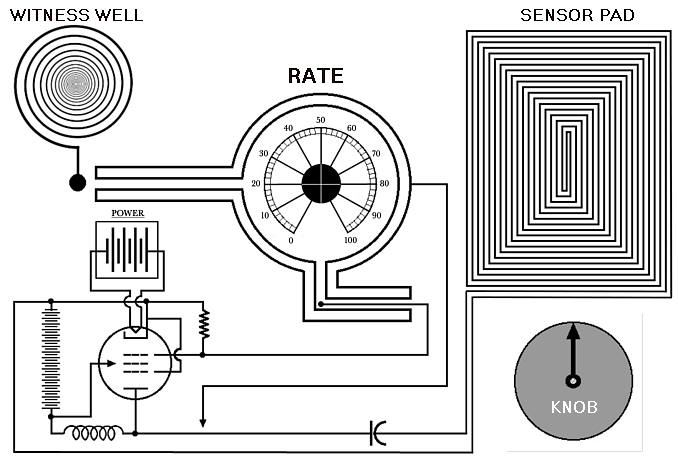|
|
|||||
| _____________________________________________________ | |||||
|
Hieronymus Machine is a general term that refers to the patented Radionics devices invented by electrical engineer Dr. Thomas Galen Hieronymus (November 1895–1988). Hieronymus received a U.S. Patent for his invention in 1949, which was described in the application title as a device for "detection of emanations from materials and measurement of the volumes thereof." The theory of operation on which Hieronymus Machines are based is that all matter emits a kind of "radiation" that is not electromagnetic, but exhibits some of the characteristics of both light and electricity. The quality of this emanation is unique to every kind of matter, and therefore can be utilized for detection and analysis. Hieronymus coined the term "eloptic energy" to describe this radiation (from the words "electrical" and "optical".) All of his machines were designed to detect and manipulate this eloptic energy. Eloptic emanations have never been detected by instruments designed to measure electromagnetic energies, so the theory is not accepted by mainstream science. The inventions of Hieronymus were championed by Astounding Science Fiction editor John W. Campbell in late 1950s and early 1960s editorials. Campbell was convinced that the machines were almost magical in nature, and that symbplic representations the of Hieronymus Machine could work by analogy or symbolism, directing the user's ESP powers. As an example, Campbell believed one could create an eloptic receiver or similar device with the prisms and amplifiers represented by their cardboard or even schematic representations. Through the use of mental powers, such a machine would function as well as its "real" equivalent. While Campbell claimed that Hieronymus machines actually did perform this way, the concept was never fully accepted by Hieronymus nor pursued by him in later years. Below find a schematic diagram of the Heironymus Machine, You can use it to build your own machine or usethe diagram itself: |
|||||
|
|
|||||
|
|
|||||
